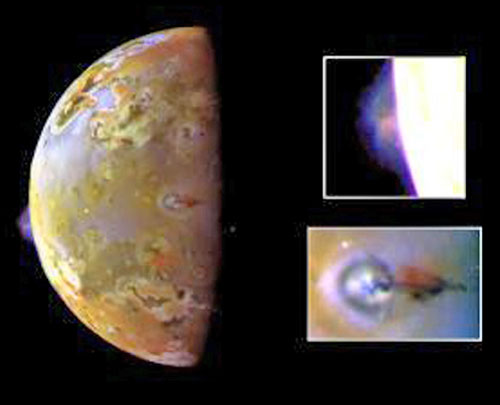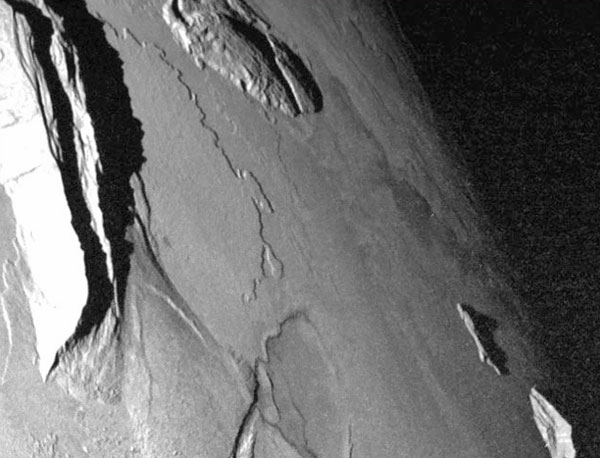|

from
Thuntherbolts Website
I’os Multimedia:
Jupiter & Io

Io’s Plumes
Aug 04, 2004

Credit:
NASA/JPL-Caltech
Jupiter’s inner Galilean
moon, Io, spews plumes of material into space from several hot
spots. They have been called volcanoes. But are they?
The hot spots are unexpectedly hot. Probe sensors overloaded after
registering temperatures higher than any lava on Earth. And some of
the hot spots move over the surface.
Plume velocities are unexpectedly high and uniform. The plumes are
tall, have an umbrella shape, and deposit material in a ring around
the source. They also have a filamentary structure. Io orbits inside a donut-shaped cloud of charged particles that come
from the material in the plumes, and a tube of electrical current
connects Io with Jupiter’s auroras.
These discrepancies from Earth volcanoes prompted Thomas Gold (in
1979) and Anthony Peratt and A. J. Dessler (in 1988) to note the
similarities of the unexpected features to electrical discharges in
plasma.
An electrical arc is about as hot as the surface of the Sun. It
would easily "blind" a spacecraft’s sensors. And an arc often
wanders over the surface of a cathode.
Arcs accelerate material to fairly high and uniform velocities. This
produces uniform trajectories that deposit material a uniform
distance from the source, explaining the rings around the
"volcanoes." And the forces in the discharge channels
pinch the arcs
into filaments. Repulsive forces between filaments tend to space
them equally, often in pairs, around the plumes. Peratt and
Dessler
remarked on the similarity of the filamentary umbrella shape to the
shape discharged from a laboratory "plasma gun".
The cloud of charged particles flowing past Io constitutes an
electrical current. Peratt and Dessler calculate that the power it
should induce across Io is about equal to the energy of the
"volcanoes".
The largest planet in the Solar System, with the most active
magnetosphere in the Solar System, has its electrical circuits
"shorted out" by its inner satellite. The million-Ampere currents
flowing through Io’s crust make it a unique laboratory for studying
the processes of interplanetary-scale electrical discharges. The
scars produced will help us to distinguish electrical from impact
scars left on other moons, comets, asteroids and planets.
The Mountains of Io
July 17, 2004

Credit: Galileo
Project, JPL, NASA
Mongibello Mons, on the
far left of this image, is a sharp ridge rising so high it would
rank among the highest mountains if it were on Earth. The existence
of mountains like this poses a mystery for traditional astronomers.
Io is the most volcanically active body in the solar system. This
activity is supposed to be caused by tidal forces from Jupiter and
its other large moons. In order to produce so many fast-changing and
sometimes moving volcanoes, Io must be nearly molten. The
temperatures in the active regions were higher than the spacecraft
Galileo’s thermal sensors could measure, far hotter than any volcano
on Earth. Yet ridges like Mongibello Mons require a rigid crust to
keep them from collapsing.
From an Electric Universe point of view, the volcanoes on
Io are
electrical arcs driven by charge differentials between Io and the
plasma sheath (magnetosphere) that envelopes Jupiter. The discharge
channels are very small and very hot. But between them, Io is not
melted. The mountains left standing after the arcs have cut and
melted their way around them remain supported by cold and firm
bedrock.
|

